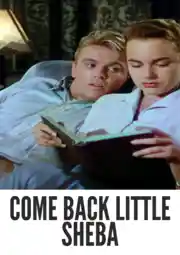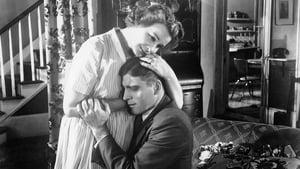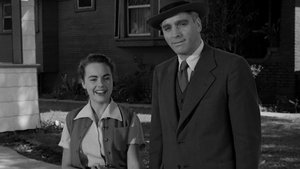Contact: [email protected]
Video Sources 0 Views

Synopsis
[ez-toc]





Introduction
In the ever-evolving landscape of cinema, there exists a delicate dance between preserving the past and embracing the future. One such testament to this delicate balance is the colorized version of the 1952 classic, “Come Back Little Sheba Colorized.” This article explores the transformative journey of this old film, examining its narrative, the making of a classic, the intricacies of colorization, and the enduring impact it has left on audiences.
In an era dominated by cutting-edge special effects and high-definition visuals, the decision to colorize a black-and-white gem from the past might seem like an unconventional choice. However, the significance lies in the revival of interest in old films, breathing new life into a cinematic era that holds a unique charm and narrative depth.
Read Media File Transfer Agreement: Terms and Conditions
Read FAQ
The Story of “Come Back Little Sheba Colorized”
At its core, “Come Back Little Sheba Colorized” delves into the poignant narrative of Doc and Lola Delaney, a married couple entangled in the web of addiction and shattered dreams. Released in 1952, the film navigates the complexities of their relationship, exploring the dark corners of alcoholism and the resilience needed to find redemption.
Doc Delaney, portrayed by the iconic Burt Lancaster, is a recovering alcoholic, while Shirley Booth brings Lola to life with a nuanced performance that earned her an Academy Award for Best Actress. Their journey unfolds against the backdrop of a seemingly mundane suburban life, yet within the walls of their home, a gripping tale of struggle and survival emerges.
The Making of a Classic
Directed by Daniel Mann and adapted from the acclaimed Broadway play by Ketti Frings, “Come Back Little Sheba Colorized” was a collaborative effort that bore the hallmarks of its time. The film starred not only Burt Lancaster and Shirley Booth but also featured stellar performances by Terry Moore and Richard Jaeckel.
The original source material, a play by William Inge, provided a rich foundation for the cinematic adaptation. Inge’s keen understanding of human relationships and the exploration of the human psyche contributed to the film’s depth and emotional resonance. The chemistry between the main actors and the careful guidance of director Daniel Mann resulted in a classic that has stood the test of time.
Bringing “Come Back Little Sheba” to Life in Color
In an era where black-and-white films are often perceived as relics of the past, the decision to colorize “Come Back Little Sheba Colorized” was a bold one. The colorization process applied to this 1952 gem aimed not to overshadow its original essence but to enhance the viewing experience for modern audiences.
The colorization technique utilized advanced technology to carefully infuse hues into the film, bringing vibrancy to the once monochromatic world of Doc and Lola Delaney. This meticulous restoration process aimed to strike a balance between preserving the authenticity of the era and introducing a visual element that resonates with contemporary audiences.
Examining the Colorized Version
The release of a colorized edition of a classic film is often met with both anticipation and controversy. Purists argue that altering the original black-and-white presentation dilutes the intended artistic vision. However, proponents of colorization argue that it breathes new life into old movies, making them more accessible to younger generations.
To provide a glimpse into the impact of colorization, selected movie clips from “Come Back Little Sheba Colorized” showcase the transformation. The warmth of the Delaney household, the subtle shifts in mood, and the nuances of the characters become more pronounced, offering a fresh perspective on a timeless narrative.
The Timeless Themes of “Come Back Little Sheba Colorized”
Beyond the technical aspects, the enduring appeal of “Come Back Little Sheba” lies in its exploration of timeless themes. The film transcends its temporal setting, delving into the complexities of redemption, forgiveness, and the dark side of human nature. These themes resonate with audiences across generations, making the film a timeless exploration of the human condition.
The portrayal of addiction and the fragility of dreams serves as a universal backdrop, inviting viewers to reflect on their own struggles and triumphs. The emotional depth of the characters and the raw honesty of their journey contribute to the film’s enduring relevance.
Legacy and Impact
Upon its initial release, “Come Back Little Sheba Colorized” received critical acclaim for its powerful performances and compelling storytelling. Shirley Booth’s Oscar win and the film’s nominations in other categories underscored its impact on the cinematic landscape. The legacy of the film endures not only in its accolades but also in the hearts of those who have been moved by its narrative.
Rediscovering Classic Cinema Through Colorization
The release of a colorized version of “Come Back Little Sheba Colorized” is part of a broader trend aimed at introducing younger generations to the magic of classic cinema. Old films, once relegated to the annals of history, find a new lease on life through innovative restoration methods like colorization.
Film preservationists and enthusiasts argue that embracing colorization is a necessary step in ensuring the continued relevance of classic films. By striking a balance between authenticity and modern appeal, colorization serves as a bridge connecting different cinematic eras.
The Enduring Value of Restoring and Colorizing Old Films
As technology advances, the methods employed in film restoration continue to evolve. The preservation of cinematic heritage is not just an act of nostalgia but a commitment to passing on the artistic legacy to future generations. Colorization, when executed with care and respect for the original work, becomes a tool for breathing new life into cinematic treasures.
The enduring value of restoring and colorizing old films lies in the ability to make them accessible to diverse audiences. By embracing technological advancements, the film industry ensures that the stories and emotions captured on celluloid remain vivid and impactful for generations to come.
Embracing the Past: Appreciating “Come Back Little Sheba Colorized” in Its Colorized Glory
As we navigate the realms of classic cinema, the colorized version of “Come Back Little Sheba Colorized” invites audiences to appreciate the film in a new light. The recommendation is not to replace the original black-and-white experience but to offer an alternative perspective that enhances the overall cinematic journey.
Whether you choose to view the film in its original form or in its colorized glory, each version carries its own unique charm. The juxtaposition of the two provides a fascinating exploration of how technology can breathe new life into cinematic masterpieces while honoring their timeless narratives.
In Conclusion
“Come Back Little Sheba Colorized” in its colorized 1952 form is a testament to the delicate interplay between preserving the past and embracing the future. The enduring relevance of its narrative, coupled with the artistic validity of its colorized presentation, challenges audiences to reconsider the boundaries of classic cinema.
As we appreciate the nuanced performances of Burt Lancaster and Shirley Booth, the intricate storytelling of Ketti Frings, and the visionary direction of Daniel Mann, we recognize the importance of engaging in the ongoing debate surrounding colorization. The film’s legacy extends beyond its original release, serving as a catalyst for discussions on film preservation, technological advancements, and the ever-evolving landscape of cinema.
In a world inundated with the latest cinematic offerings, “Come Back Little Sheba Colorized” stands as a beacon, inviting audiences to delve into the treasures of the past and find renewed appreciation for the artistry that transcends time.










